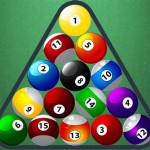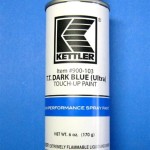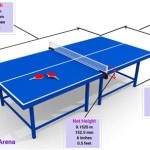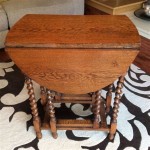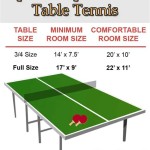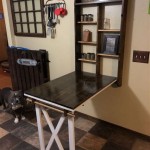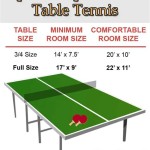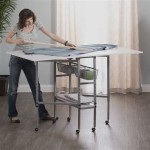Standard 8 Foot Pool Table Dimensions: A Comprehensive Guide
The 8-foot pool table, often referred to as the "regulation" size for home use and many amateur leagues, strikes a balance between playability and space requirements. Understanding the standard dimensions of an 8-foot pool table is crucial for anyone considering purchasing one, whether for personal enjoyment or competitive practice. This article delves into the specific dimensions, their significance, and the factors influencing them, providing a comprehensive guide for informed decision-making.
Selecting the correct size pool table is as crucial as understanding the game itself. An improper size can lead to an inhibited playing experience, strategic limitations, and spatial constraints. The 8-foot table offers a comfortable middle ground for most players, allowing for a challenging game without demanding an excessively large room. This is why it is a popular choice for both residential game rooms and commercial establishments that cater to casual players.
Key Point 1: Defining the Playing Surface and Overall Dimensions
The term "8-foot" refers specifically to the *playing surface* dimensions, which is the rectangular area enclosed by the cushions. The standard playing surface of an 8-foot pool table measures 44 inches wide and 88 inches long. This is crucial to differentiate from the *overall dimensions* of the table, which include the frame or rails surrounding the playing surface. The overall dimensions will invariably be larger, varying slightly depending on the manufacturer and the style of the table. Typically, the overall width can range from 50 to 56 inches, and the overall length can range from 94 to 100 inches. When planning for a pool table, it is imperative to account for these overall dimensions to ensure adequate room clearance for comfortable gameplay.
The difference between the playing surface and the overall table dimensions is due to the construction of the table itself. The rails, which house the cushions, extend beyond the playing surface. The frame, providing structural support, also adds to the overall footprint. Manufacturers may vary slightly in how they design these elements, leading to the dimensional variations observed across different brands and models. Precise measurements are usually available in the product specifications from the manufacturer or retailer, and prospective buyers should consult these before making a purchase.
Furthermore, the height of the pool table plays an important role. While not typically considered a primary dimension when referencing table size, the standard height, measured from the floor to the top of the playing surface, is between 29.25 inches and 31 inches. This height ensures comfortable play for most adults, allowing for a proper stance and cueing motion. Deviations from this height can significantly impact gameplay, potentially causing discomfort and hindering a player's ability to execute shots accurately.
Key Point 2: The Importance of Room Size and Cue Clearance
Beyond the table's dimensions, the available room space is a critical factor in determining suitability. Adequate room is necessary to allow players to comfortably maneuver around the table and execute shots from all angles. The generally accepted rule of thumb is to provide at least 5 feet of unobstructed space around all sides of the table. This allows for the use of a standard 58-inch cue without bumping into walls or furniture.
To calculate the minimum room size needed for an 8-foot pool table, one must add 10 feet (5 feet on each side) to the playing surface dimensions. This results in a minimum room size of approximately 14 feet by 18 feet. However, experienced players often recommend even more space, particularly if longer cues are used or if the room contains obstacles that might impede movement. A tighter space can significantly impact gameplay and enjoyment, limiting shot selection and creating frustrating experiences.
It is important to consider any existing furniture or architectural features in the room when calculating space. Columns, support beams, or built-in cabinets can reduce usable space and require adjustments to the table's placement. It is therefore prudent to carefully measure the room and consider the potential layout before committing to a purchase.
In cases where space is limited, shorter cues, such as 48-inch or 52-inch cues, can be used. These shorter cues allow for greater maneuverability in confined areas, but they can also affect shot accuracy and power, particularly on longer shots. Furthermore, specially designed tables with shorter lengths, commonly referred to as "bar tables," may be considered. These sacrifice competitive standards for spatial efficiency.
Key Point 3: Variations and Considerations for Slate and Cloth
The quality of the slate and the cloth covering the playing surface significantly impacts playability and longevity. Standard 8-foot pool tables typically utilize a three-piece slate construction. Each slate piece contributes equally to creating a level and consistent playing surface. High-quality slate is essential for accurate ball roll and to prevent warping or sagging over time. The thickness of the slate is also important. Generally, slate thickness ranges from ¾ inch to 1 inch, with thicker slate offering greater stability and resistance to movement.
The cloth covering the slate is another critical factor. Wool blend cloths are common, but the wool content and weave tightness can vary significantly. Finer weaves, often with a higher wool content, provide faster ball speeds and greater accuracy. The color of the cloth is purely aesthetic, but the quality of the weave directly influences the game. Furthermore, the way the cloth is stretched and attached to the slate is important for ensuring a smooth and consistent playing surface.
Variations in the quality of these materials can result in a significant difference in the overall cost and performance of the pool table. Tables using higher-grade slate and cloth tend to be more expensive but provide a superior playing experience and require less frequent maintenance. Cheaper alternatives may compromise on these materials, leading to uneven ball roll, faster cloth wear, and ultimately a less enjoyable game.
Finally, the type of cushion or rubber used on the rails affects the ball rebound. High-quality cushions should provide consistent and predictable rebound angles. Over time, cushions can harden or become brittle, impacting their performance. Regularly replacing cushions is essential to maintaining optimal gameplay. Similarly, the pockets must be properly constructed and sized to ensure fair ball capture. Small pocket openings increase difficulty, while large pockets may render the game too easy.
In conclusion, the dimensions of an 8-foot pool table, coupled with the consideration of appropriate room size and the quality of materials used in its construction, are critical factors in creating an optimal playing environment. Careful planning and research are essential to ensure a satisfactory experience and a worthwhile investment.

The Official Size Of A Pool Table Canadian Home Leisure

How Tall Is A Standard Pool Table Height Guide Bar 101

Room Size Pooltables Com

Pool Table Room Size Calculator

Pool Table Room Size Guide Chart Birkbeck Billiards

Room Size Specifications Olhausen Billiards

Room Size Specifications Olhausen Billiards

Snooker Table Size And Dimensions For Room Official Website Of Central

Correct Pool Table Dimensions To Leave Enough Room For Playing Billiard

Pool Table Room Size Guide Chart Birkbeck Billiards

